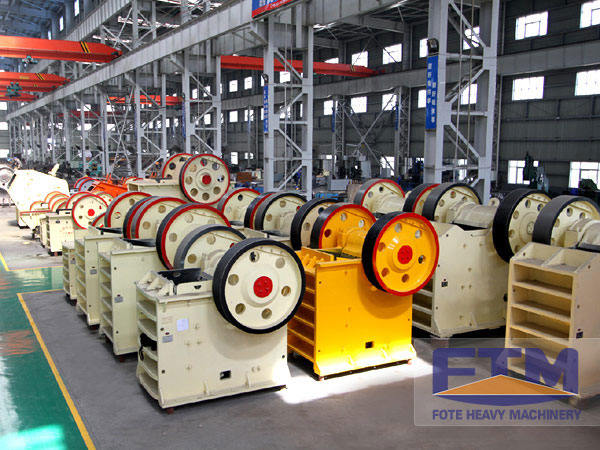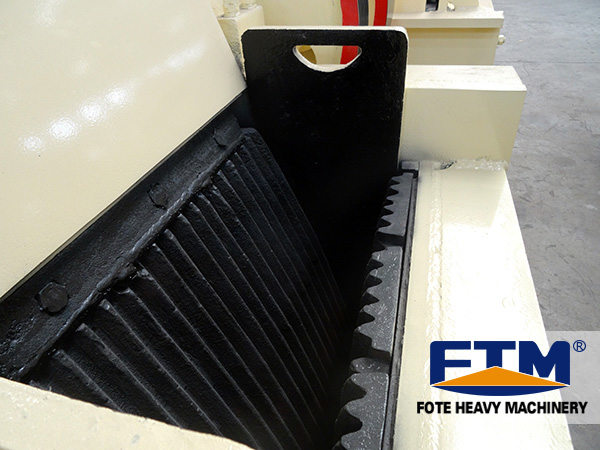NEWS
Wear and Maintenance for Parts of Jaw Crusher
By: Fote MachinerySeptember 22nd,2018
The jaw crusher is simple, sturdy and durable, easy to maintain and repair, and low in production cost. It is a crushing machine widely used in cement plants.

The jaw crusher is divided into two types: single pendulum type and compound pendulum type. The common feature is that the material is combined with the crushing force and the grinding force between the broken jaw plates, so the crushing efficiency is high.
In the working process of the jaw crusher, the jaw plate plays a central role, and often subjects to the impact and friction of the material, which will suffer a great loss over time. Therefore, in daily production operations, it is very important to maintain parts of jaw crusher. How to reduce wear and prolong service lifespan is the most important issue.
The research shows that there are two main reasons for the wear of jaw crusher’s tooth plate. One is that the abrasive slides relative to the tooth plate in a short distance, the cutting metal causes the grinding debris, and the other is that the repeated pressing of the abrasive causes the tooth plate material to be deformed multiple times, causing the metal material to fall off. The process of wear is as follows:
1. The material repeatedly presses and cuts tooth plates to form a minute crack in the surface layer of the tooth plate area or at the root of the extruded metal protruding portion, and the micro crack continuously expands and connects, causing the surface metal material to fall off and form wear debris.
2. The material repeatedly presses the tooth plate, causing it to be partially fractured or turned up, and the fragmented or turned-over portion is peeled off together with the material that is crushed and impacted to form wear debris.
3. The material slides shortly between the tooth plates, and the tooth plates are cut to form wear debris.

The following points must be noted for the maintenance and repair of jaw crusher:
1. Check the bearing temperature on time and control the bearing temperature to not exceed 60 degrees. Without a thermometer installed, the surface temperature of the bearing can be measured with a surface thermometer.
2. Check the lubrication system and cooling system if they have oil leaks and water leaks; check the sound and vibration of the oil pump.
3. Check the wear of the machine parts and the looseness of the connectors.
4. Regularly change the oil and clean the filter.

